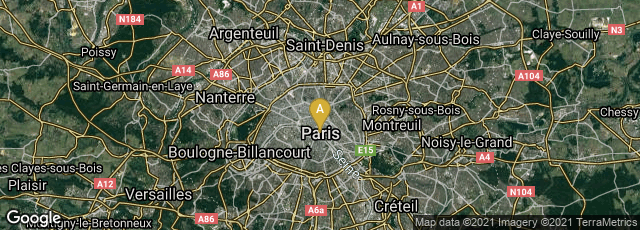Jacopo Caraglio, Jove and Antiope (after a drawing by Perino del Vaga). Part of the series of prints entitled The Loves of the Gods. Copper engraving in the Budapest Museum of Fine Arts. Reproduced as Plate 7 in Alessandro Nova, Correggio's 'Lascivie" p. 125. In: Kohl, Jeannette (Hrsg.): Renaissance love : eros, passion, and friendship in Italian art around 1500, Berlin 2014, pp. 121-130.


A: Paris, Île-de-France, France
In 1545 French physician, writer, and translator, Charles Estienne, of the Estienne printing dynasty, published De dissectione partium corporis humani libri tres. . . . in Paris. Charles was the younger son of scholar printer Henri I Estienne. De dissectione, one of the most interesting woodcut books of the French Renaissance, was printed at the Estienne Press by his stepfather Simon de Colines, who ran the press from Henri I's death until Charles's brother Robert came of age.
Charles Estienne studied medicine in Paris, completing his training in 1540; in 1535, during his course of anatomical studies under Jacques Dubois (Jacobus Sylvius), he had Andreas Vesalius as a classmate. At the time the only illustrated manuals of dissection available were the writings of Berengario da Carpi, and the need for an improved, well-illustrated manual must have been obvious to all students of anatomy, particularly the medical student son of one of the world's leading publishers. Estienne did not hesitate to fill this need. The manuscript and illustrations for De dissectione were completed by 1539, and the book was set in type halfway through Book 3 and the last section, when publication was stopped by a lawsuit brought by Étienne de la Rivière, an obscure surgeon and anatomist who had attended lectures at the Paris faculty during 1533-1536, overlapping the time of Estienne's medical study in Paris.
According to historian of surgery and economist, François Quesnay, Estienne may have attempted to plagiarize a manuscript of Étienne de la Rivière which the latter had turned over to him for translation from French into Latin. In the eventual settlement of the lawsuit, Estienne was required to credit Rivière for the various anatomical preparations and for the pictures of the dissections. Had De dissectione been published in 1539, there is no question that it would have stolen much of the thunder from Vesalius's Fabrica: it would have been the first work to show detailed illustrations of dissection in serial progression, the first to discuss and illustrate the total human body, the first to publish instructions on how to mount a skeleton, and the first to set the anatomical figures in a fully developed panoramic landscape, a tradition begun by Berengario da Carpi in his Commentary on Mondino. Nonetheless, Estienne's work still contained numerous original contributions to anatomy, including the first published illustrations of the whole external venous and nervous systems, and descriptions of the morphology and purpose of the "feeding holes" of bones, the tripartate composition of the sternum, the valvulae in the hepatic veins and the scrotal septum. In addition, the work's eight dissections of the brain provide more anatomical detail that had previously appeared.
The anatomical woodcuts in De dissectione have attracted much critical attention due to their wide variation in imagistic quality, the oddly disturbing postures of the figures in Books 2 and 3, the obvious insertion in many blocks (again, in Books 2 and 3) of separately cut pieces for the dissected portions of the anatomy, and the uncertainty surrounding the sources of the images. The presence of inserts in main blocks would suggest that these blocks were originally intended for another purpose, and in fact a link has been established between the gynecological figures in Book 3, with their frankly erotic poses, and the series of prints entitled The Loves of the Gods, engraved by Gian Giacomo Caraglio after drawings by Perino del Vaga and Rosso Fiorentino. It has also been conjectured that the male figures in Book 2 are from blocks cut for an unpublished book of anatomical designs after Rosso Fiorentino's studies of bodies disinterred from the burial grounds at Borgo; however, this speculation remains insufficiently supported by evidence.
Possible explanations of this connection between pornography and anatomy are that the engraver of the female nude woodcuts did not have access to a model, and for the sake of expediency copied the general outlines of the female nudes from "The Loves of the Gods," eliminating the male figures from the erotic illustrations. Another wood engraver, perhaps Rivière, would then have prepared the anatomical insert blocks showing the internal organs. Economic reasons may also have been a factor, as commissioning entirely new woodcuts would certainly have cost more in time and money than adapting existing artwork, and after the enforced delay imposed by Étienne de la Rivière's lawsuit, both time and money may well have been in short supply. A third explanation might have been that the publishers intended to commercialize the anatomy by stressing the erotic overtones, thus appealing to a wider market than strictly physicians. Possibly because of the erotic connection, the work sold unusually well for a anatomical treatise, appearing in French the following year, with publication of an edition of the plates alone, without text, several years later. During a period in which printed erotica was very difficult to come by there would have been considerable demand for erotic images made acceptable by their adaption for medical purposes.
Choulant, History and Bibliography of Anatomic Illustration (1920) 152-155. Kellett, "Perino del Vaga et les illustrations pour l'anatomie d'Estienne," Aesculape 37 (1955), 74-89. Hook & Norman, The Haskell F. Norman Library of Science and Medicine (1991) no. 728. Bette Talvacchia, Taking Positions: On the Erotic in Renaissance Culture (1999) Chapter 8, "Mythology, Sexuality, and Science in Charles Estienne's Manual of Anatomy."